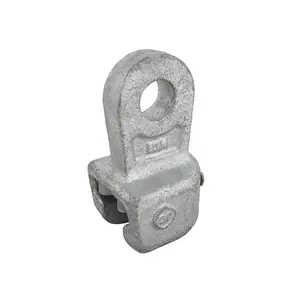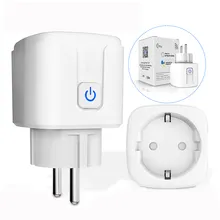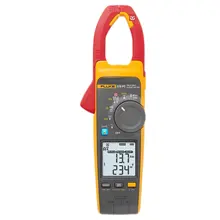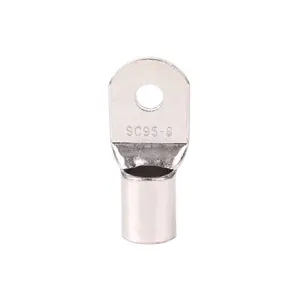The Concept of Optical Terminals
Optical terminals are specialized tools utilized in the telecommunications sector for the transmission and reception of optical signals, especially in fiber optic networks. These devices are pivotal in ensuring the effective and dependable conveyance of data, voice, and video over extensive distances, serving as essential components for enterprises, service providers, and governmental bodies necessitating high-speed and secure communication infrastructures.
The fundamental function of optical terminals is to convert electrical signals into optical signals and vice versa. This conversion is facilitated through the utilization of optoelectronic elements such as light-emitting diodes (LEDs) or laser diodes, which are commonly found at both the transmission and reception terminals of the optical setup. Typically compact and sturdy in design, these terminals incorporate these components alongside electronic circuitry that enables precise management of the signal conversion process.
Optical terminals come in various forms to cater to different fiber types, connector styles, and signal variations. They are engineered to be compatible with specific fiber counts and are often constructed to support diverse protocols and wavelengths. This adaptability renders them indispensable for professionals tasked with configuring intricate optical networks with assorted specifications.
Varieties of Optical Terminals
The market offers a diverse array of optical terminals, each tailored to fulfill distinct requirements within the telecommunications realm.
-
Optical Line Terminal (OLT): Serving as a central component in the telecommunications network's central office (CO), the OLT functions as the convergence point for multiple incoming and outgoing lines, primarily establishing primary fiber backbone connections.
-
Optical Network Unit (ONU): Positioned at the subscriber's premises, such as residential or commercial properties, the ONU is responsible for converting optical signals into electrical signals and vice versa. Additionally, it provides various services like internet connectivity or voice over IP.
-
Optical Distribution Network (ODN): Encompassing all optical fibers, cables, and passive components linking the OLT to the end user, the ODN forms the physical infrastructure facilitating connectivity.
-
Optical Terminal Exit (OTE): Commonly referred to as a Fiber Optic Terminal, the OTE denotes the termination point of fiber connections. It frequently incorporates a splitter to divide a single fiber signal into multiple streams to serve numerous clients.
Each type fulfills a specific function within the fiber optic network, ranging from high-capacity backbone links to efficient distribution networks at end-user sites.
Selecting the Right Optical Terminal
When procuring an optical terminal for business purposes on Alibaba.com, meticulous attention to several closely linked factors concerning the intended application is crucial. Below are key considerations:
Initially, evaluating the specific deployment environment of the terminal is essential. For outdoor settings or harsh conditions, opting for a terminal equipped with robust features like waterproofing and dust resistance is imperative. Conversely, indoor environments where aesthetics hold significance might necessitate a design that harmonizes with the decor.
Subsequently, identifying the types of connections involved is vital. Varied applications may demand specific connector types, underscoring the importance of selecting a terminal aligning with these specifications.
Moreover, contemplating additional features required, such as color-coded adapters for seamless integration and identification within existing systems, or built-in protective measures like dust caps or light seals, which can enhance equipment longevity, is advisable.
Lastly, but significantly, assessing the quality and reliability of the supplier's offerings is paramount. Given Alibaba.com's linkage to a vast global supplier network, opting for a provider renowned for delivering equipment meeting industry standards and tailored to one's business requisites is essential.
About Optical Terminals on Alibaba.com
Alibaba.com stands out as a premier online marketplace offering businesses an extensive selection of wholesale optical terminals tailored to diverse networking needs. With over two decades of experience in facilitating global trade solutions, Alibaba.com has solidified its position as a comprehensive platform streamlining product sourcing from verified suppliers worldwide.
Businesses seeking optical terminals will find Alibaba.com's wide-ranging options invaluable. The platform's user-friendly interface enables buyers to filter products based on color, material, compatibility, and other specifications, streamlining the search for precise requirements. Whether in search of standard FC/PC connectors for short-range links or long-distance APC/UPC variants for enterprise networking solutions, Alibaba.com's comprehensive range ensures businesses can procure quality products aligning with operational demands.
Alibaba.com's dedication to secure transactions is exemplified through services like Trade Assurance, safeguarding payments until delivery confirmation. Additionally, with features supporting convenient mobile purchasing and multilingual communication, Alibaba.com underscores its commitment to providing a seamless purchasing experience globally, making it an optimal choice for efficiently sourcing wholesale optical terminals.
Common Queries about Optical Terminals
What is an optical terminal and how is it used in telecommunications?
An optical terminal is a device that converts signals between electrical and optical or vice versa. It is used in telecommunications to transmit data over fiber-optic cables, enabling high-speed internet access and communication services.
How does an optical terminal work?
An optical terminal functions by modulating signals into optical form and transmitting them over fiber-optic cables. At the receiving end, a photodetector converts the optical signal back into electrical form for data processing.
What are the key components of an optical terminal?
Key components comprise a laser or LED light source, a modulator for encoding data onto the light beam, a photodetector for converting light into an electrical signal, and signal processing units for data management.
What factors should I consider when selecting an optical terminal for my business?
When choosing an optical terminal, factors to consider include required transmission speed, data type, compatibility with existing network infrastructure, and the necessity of a regulated or unregulated power supply.
What distinguishes an LED from an LCD backlight in optical terminals?
LED backlights utilize light-emitting diodes for illumination, while LCD backlights employ liquid crystal displays (LCDs) for illumination. LEDs are more energy-efficient but may have a shorter lifespan compared to LCDs.
Can optical terminals be used with any type of fiber-optic cable?
Most optical terminals are designed to function with various single-mode or multimode fiber-optic cables, but it is crucial to match the connector type and compatibility with the cable's specifications for optimal performance.
Are there specific maintenance considerations for optical terminals?
Maintenance typically involves cleaning the optical interfaces, inspecting for physical damage to cables or devices, and ensuring environmental conditions like temperature and humidity fall within acceptable ranges.
What role does transmission speed play in optical terminals?
Transmission speed indicates how rapidly data can be transmitted and received by an optical terminal. Higher transmission speeds equate to faster data transfer rates, crucial for real-time data processing applications.
How does the choice of fiber-optic cable type affect optical terminal selection?
The chosen fiber-optic cable type directly impacts an optical terminal's performance. Aligning the device's specifications with the appropriate cable type is essential for meeting the application's requirements.
Can optical terminals facilitate long-distance data transmission?
Indeed, optical terminals are commonly employed for long-distance data transmission. However, the maximum transmission distance is contingent on the specific optical device type and signal quality across the entire cable length or link.
Are there regulations to consider when procuring optical terminals?
Regulations may differ by region, but it is generally advisable to ensure purchased optical terminals comply with local telecommunications equipment laws and standards.
How can I determine if an optical terminal supports multiple transmission protocols?
Review the product specifications or contact the supplier to ascertain if the optical terminal supports various transmission protocols. This is crucial for compatibility with different network equipment or services.
Should I opt for a managed or unmanaged optical terminal?
Managed optical terminals offer additional features like remote monitoring and management, beneficial for network maintenance and diagnostics. Conversely, unmanaged optical terminals are simpler and cost-effective but provide less control over advanced configurations.
What is the typical lifespan of an optical terminal?
An optical terminal's lifespan varies based on quality, usage conditions, and maintenance practices. Typically, a well-maintained device can endure several years before necessitating replacement.
Is customization of optical terminals feasible to align with specific business needs?
Many suppliers may offer customization options for optical terminals to cater to specific business requirements. This customization can encompass tailored cable lengths, interfaces, or even branding.
How does temperature impact optical terminal performance?
Extreme temperatures can influence an optical terminal's performance. Most devices are designed to function within specific temperature ranges; surpassing these limits may lead to reduced performance or reliability.








































 浙公网安备 33010002000092号
浙公网安备 33010002000092号 浙B2-20120091-4
浙B2-20120091-4